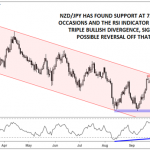My last update on Oryzon Genomics (MADX: ORY) was in December 2016 after the company presented encouraging Phase 1/2a data at the American Society of Hematology (ASH) meeting with ORY-1001. ORY-1001 is the company’s potent and highly selective Lysine Specific Demethylase 1 (LSD1) inhibitor under development for the treatment of acute myeloid leukemia (AML) and small cell lung cancer (SCLC).
The Phase 1/2a data presented at ASH demonstrate excellent safety and tolerability, along with initial signs of therapeutic effect in leukemia. The most pronounced effect was observed in patients with a specific FAB subtype of leukemia known as M6/AML. Oryzon’s partner, Roche, has taken over the development of ORY-1001 (now called RG6016) for further clinical studies.
Since December, Oryzon has had a number of positive updates for investors, including advancements with its pipeline and the financial position. Below is a look at some of the recent news since ASH and some thoughts on the financial results released last week.
Quick Review of the Financials
On February 24, 2017, Oryzon reported financial results for the fourth quarter and full year ending December 31, 2016. Total collaborative revenue for the quarter was $0.03 million, bringing revenue for the full year to $0.78 million. Revenue is derived from collaborative research work with Roche on ORY-1001, deferred recognition of a previous upfront payment from Roche for ORY-1001 in 2014, and non-dilutive research grants that support work on ORY-2001.
Research grants have been a nice source of cash for the company. In December 2016, Oryzon announced a new grant in the form of a loan from the Ministry of Economy and Competitiveness, Government of Spain and FEDER Funds from the European Union and included under the RETOS Collaboration 2016 program. Oryzon will receive approximately $0.8 million through multiyear disbursements for further development of its epigenetic inhibitors against inflammatory indications.
Net loss for the quarter totaled $1.36 million, driven by $1.71 million in R&D and $1.04 million in general and administrative costs. Oryzon continues to invest in its therapeutic pipeline, having recently advanced ORY-2001 into a multiple ascending dose study and nominated ORY-3001 for IND-enabling studies in non-oncological conditions. Net loss for the full year totaled $5.74 million, driven by $5.49 million in R&D and $5.01 million in G&A. The company also recorded $0.92 million in financial and tax expenses during calendar 2016.
Oryzon exited December 2016 with $28.75 million in cash, equivalents, and short-term investment. Cash increased $5.03 million from December 31, 2015, thanks to the closing of two debt financing transactions in May and September 2016 totaling $16.5 million. I project the operating burn in 2017 will be between approximately $13-15 million; thus, the current balance is sufficient to fund operations well into 2018.
Pipeline Update – RG6016 (formerly ORY-1001)
The fact that ORY-1001 is now being called RG6016 is a clear sign that progress has been made over the past year. Roche is now in charge of future clinical development in both AML and SCLC and Oryzon has the potential to earn in excess of $500 million in development and commercial milestone, along with tiered royalties up to the mid-teens on sales.
Phase 1/2a Data at ASH for RG6016 included a full analysis of the safety, pharmacokinetic, and preliminary therapeutic effect. The data presented at the ASH confirm the safety and adverse event profile were within expectations and consistent with previous findings. Investigators concluded that the drug was well tolerated with excellent oral bioavailability and pharmacokinetic parameters.
Initial signs of therapeutic effect were evident in a number of patients. For example, in vivo blast differentiation (including differentiation syndrome) occurred in four of six (67%) subjects with MLL fusion gene. Falling bone marrow blasts was observed in one subject (#0701) following subsequent cycles. Blast cells cleared from blood in another subject (#0207) that achieved stable disease. In subjects with M6/AML, all achieved stable disease (n=4). Results in other subjects (n=4) with MLL were mixed, with one achieving differentiation and another having only residual skin disease, whereas one saw progressive disease and another was unevaluable (withdrew).
















Leave A Comment